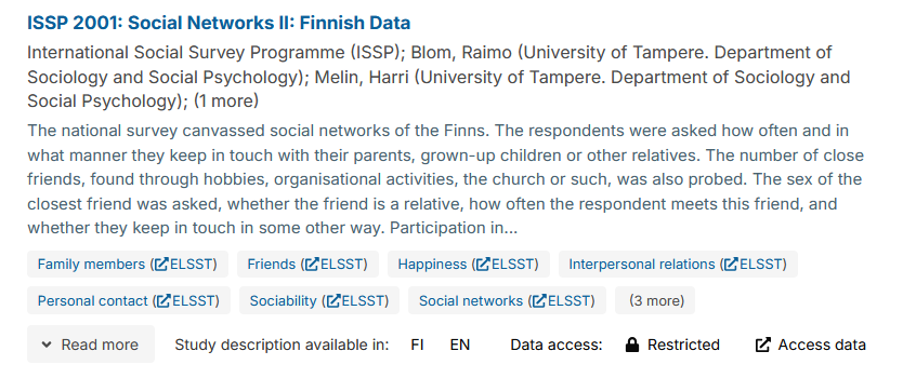Language
The user interface of the CESSDA Data Catalogue is always in English.
The metadata (study descriptions) are in the language as originally provided by the organisations producing the metadata, that is, the Publishers. Some Publishers provide most study descriptions both in English and in the local language, some only in either English or in the local language.

The results list shows which languages a particular study is available in. Users can change the metadata language by clicking on the language tab below the abstract in the list. In the detailed study view, users can switch between the study description languages by choosing another language from the dropdown list next to the search box. If the study description is not available in the language chosen from the dropdown list, the system gives notice of this with information on which languages the study description is available in.

Note that the study description language (i.e. metadata language) may be different from the language of the actual data files. For instance, the Finnish Social Science Data Archive provides all study descriptions in Finnish and English but only about 20% of the data files are available in English, either because the original data were in English or because the variables and response options have been translated into English for reuse purposes after data collection. The ‘Access data’ button brings the users to the study description page on the Publisher’s website, where the information on data file languages is available.
The CESSDA Data Catalogue does not support search across all languages. The user has to choose the language in which to enter the search terms. This is because search across languages would not be comprehensive. Some languages contain many different cases of words which the multilingual search would not handle, so the results might only include e.g. the singular form(s) of the search term and not find the plural or other case forms.